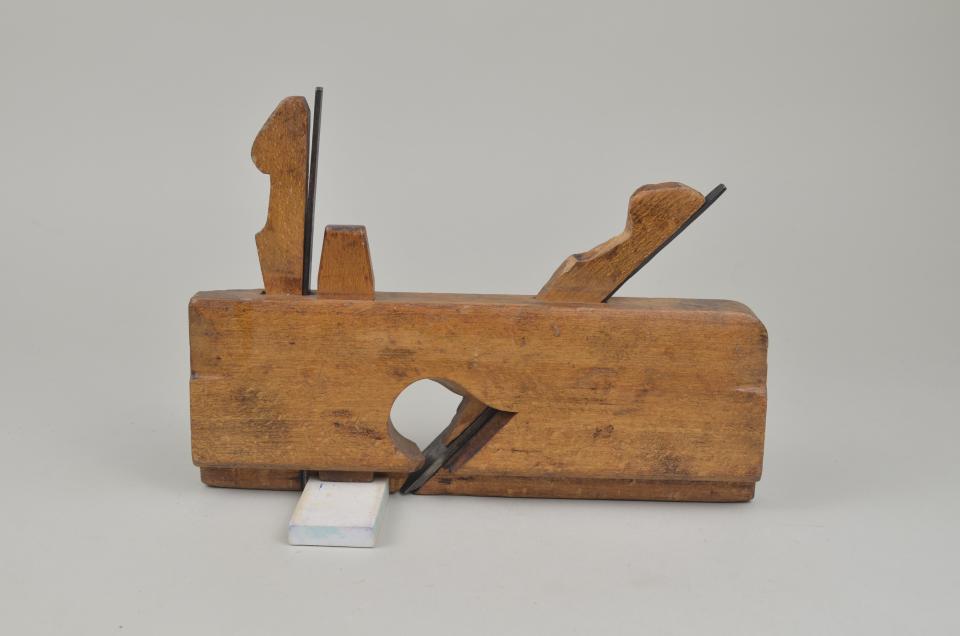
Length 23.7cm x Width 2.8cm x Height 17.1cm
a- Length 23.7cm x Width 2.8cm x Height 11.8cm
b- Length 15.2cm x Width 2.1cm x Height 0.8cm
c- Length 19.0cm x Width 1.6cm x Height 0.4cm
d- Length 14.3cm x Width 2.3cm x Height 0.8cm
e- Length 17.0cm x Width 1.5cm x Height 0.3cm
Dado grooving plane comprised of five parts, a wooden rectangular body with an angled cutout through the middle and an grooving profile on the sole (a), a wooden wedge piece that tapers to a point at the bottom and is rounded at the top (b), an iron with a straight blade (c), another wedge that is also tapered at the bottom and round at the top (d), and another iron with a forked blade (e). The first wedge and iron set (b), and (c), fit together through the angled cutout in the body. The second wedge and iron set (d), and (e), fit together inside of a straight cutout through the plane. The wedges hold the irons in place as the plane runs along the wood surface. Stamped on the toe of the plane is "J. Dawson MONTREAL", and "I BLOWER". Stamped on the heel is "I BLOWER", and "5/8".
Dado planes are used to cut dado grooves, strict rectangular grooves with straight bottoms and shoulders. Dado grooves are worked across the grain. A double spur is installed in front of the cutting iron, and cuts two trenches on either side of the blade. This way, the blade can dig out material with minimal tear-out and exceptionally clean lines. This plane was traditionally used for preliminary work in wood floors or to cut grooves for bookcase shelves. When working across the grain, the artist must first make a reverse stroke to ensure the double spur cuts through the surface of the wood.
